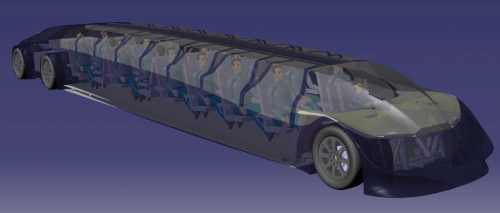

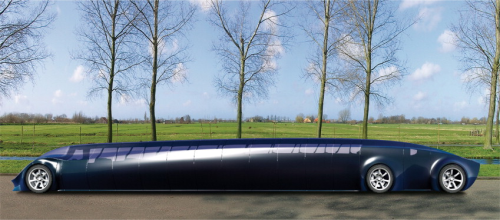
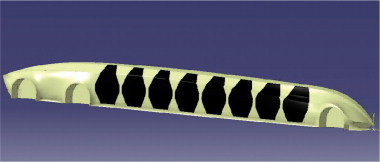
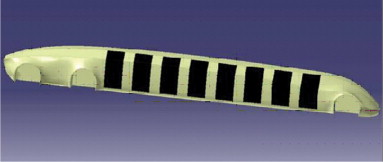
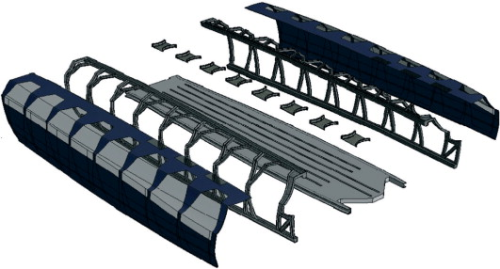
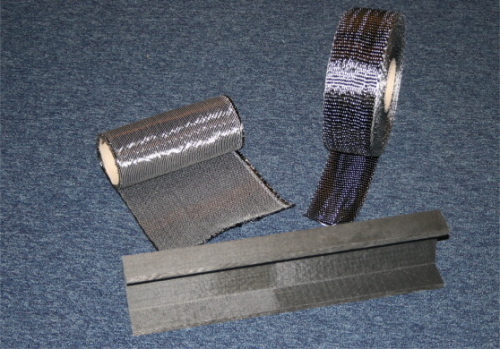
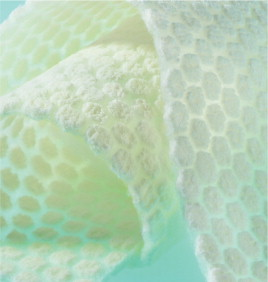
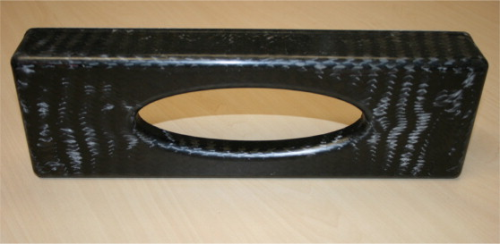
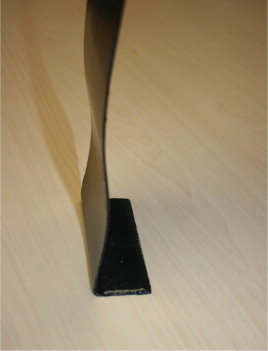
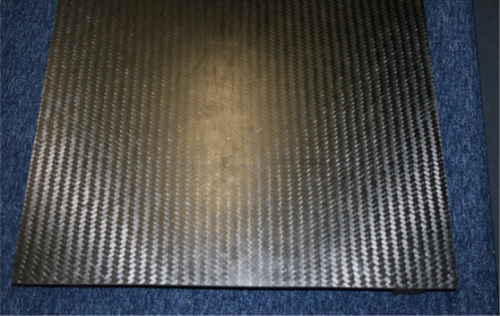
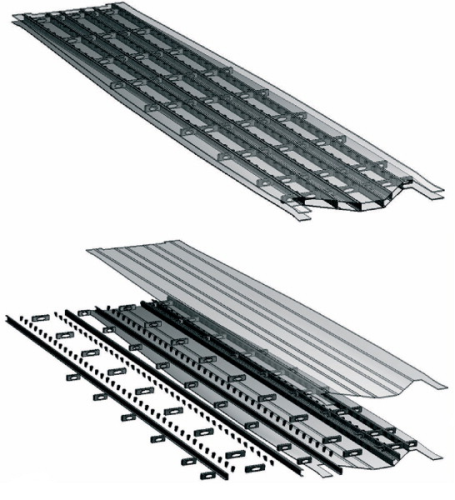
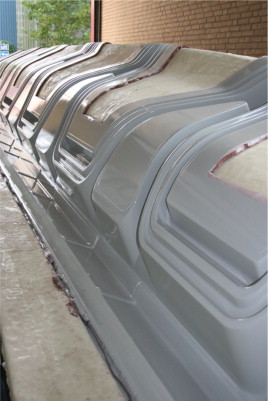
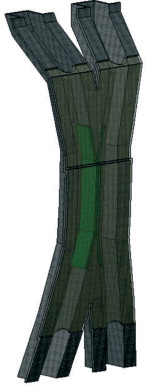
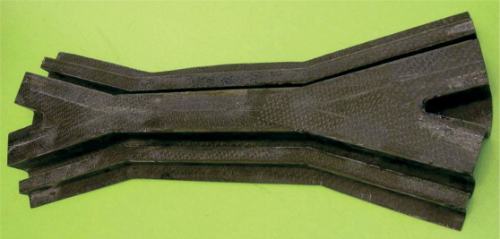
In the search for a non-polluting, fast, economic and appealing new means of public transportations, a project has started in the Netherlands for the realisation of an electric vehicle called Superbus. The fundamental principles are that the vehicle is safe, sustainable, comfortable, able to transport passengers and goods from point to point, and drive at high speed (250 km/hr cruising) on dedicated and relatively cheap infrastructure, and at conventional speed on existing roads, therefore being able to compete with cars and train. In order to be as efficient as possible the structure must be as light as possible. For this purpose, the vehicle has a composite chassis, thermoplastic bodywork and polycarbonate glazing.
In this paper the Superbus concept and a specific aspect of its structural design, namely the crossbeams, will be highlighted. The materials and production techniques used will also be described.
The Superbus
The Superbus is a concept from TU Delft for the development of an innovative public transport system. The Superbus programme is sponsored by the Dutch Ministry of Transport and Water Management for the realisation of a demonstrator for evaluation of the feasibility of the system within the ‘three-stage-rocket’ plan. This plan consists of three subsequent phases for the realisation of respectively the demonstrator, the prototype and market readiness, and the production type. This is expected to take place in a time frame that spans from 2006 to 2020.
The Superbus is sustainable; it uses low power per passengers; produces no emissions; and uses a number of recyclable materials. It runs at competitive speeds with respect to current high speed transports; it is lightweight and aerodynamically efficient; and it is very safe by the use of an outstanding navigation and control system. It is silent, innovative, comfortable, appealing and provides flexible transportation on request for people and goods. At cruising speed (250 km/h) it runs on its dedicated and relatively cheap infrastructure, and at lower speed it leaves the dedicated high-speed track and runs in city centres and on highways at conventional speeds. Through such operations, its height from the ground varies by the use of a lifting adjustable system operated by the control system, which varies the height depending on requirements related to obstacles, enhance accessibility, aerodynamic performance, etc. On a typical journey the vehicle runs at 60 mm from the ground on the dedicated high-speed track, and moves up to 120 mm on highways and to 400 mm in city centres.
The Superbus provides flexible transportation on request. This means that by the use of a phone message or an internet request a journey gets booked from departure location to destination, which can be from someone's house to a workplace.
As for the infrastructure, the strength of this new type on transport consists in the relatively economic dedicated roads – as it comprises concrete roads and sensors only – and on the ability to use existing roads, unlike trains, to reach any destination.
One of the most important characteristics of the Superbus is its safety – both passive and active. The Superbus is designed to be very safe structurally and adopts an advanced navigation system. Indeed, aerospace navigation instrumentations are implemented together with state-of-the-art safety systems for road transport. Alongside that, a number of active safety systems are implemented and under development for the specific application, such as airbags, three-point seatbelts, rear parachute and lateral morphing structures for emergency braking.
The sustainable aspects of the vehicle impact on all areas of the vehicle. For this, the structure, bodywork and glazing of the vehicle are designed to be as light as possible to enhance efficiency. As a result, the Superbus has a composite chassis, thermoplastic reinforced bodywork panels and polycarbonate glazing, the design and manufacturing of which are described below.
Structural design
The Superbus is 15 m long, 2.5 m wide and 1.6 m high. The vehicle carries 23 passengers and a driver and has 16 doors, eight per side. The high number of doors is designed to provide the required comfort, privacy, and accessibility aspects of this new type of vehicle. The overall vehicle weight is less than 9 tons, including the passengers.
As mentioned earlier, the Superbus travels on tyres at 250 km/hr on dedicated roads. For that, handling is a very important characteristic for this vehicle, which must be able to brake or avoid obstacles within 240 m from detection.
Because of these demanding operational requirements, the large number of openings in the structure, and the very high target torsion stiffness, a new design has been developed so as to improve the weight of the structure. One of the most important design features is the implementation of the cross-beams for the central part of the chassis, which results in octagonal doors, as illustrated in Figure 3.
When compared to a more conventional design consisting of rectangular doors (as shown in Figure 4), the octagonal door design is 40% lighter.
For the final design, optimisation analyses have been carried out so to achieve the torsion stiffness target and required structural strength when the vehicle is subjected to a number of loading conditions (including roll-over, frontal impact, etc).
The central part of the chassis (see Figure 5) is formed by a floor connected to two side frames united by eight top beams. The central part of the chassis is connected to the forward chassis part, the driver house, and the rear chassis part, which envelopes the powertrain compartment.
Materials
The Superbus structure is built almost completely from carbon/epoxy composites. This allows the weight of the bare structure to be kept down to 1300 kg, which is exceptional for a 15 m vehicle. The carbon fibre used throughout is Torayca T700, in three different forms.
The complete load carrying structure is built using a 12K carbon fibre unidirectional (UD) tape and stitched triaxial fabric of 0° and ±45° carbon fibres, which allows the lay-up to be made much more efficiently compared to a standard lay-up of unidirectional tape and 45° rotated fabric, produced by Selcom Srl, Italy.
The above carbon fibre is used in combination with the latest epoxy resin developed for vacuum-assisted resin infusion moulding by Dow Automotive. This resin has a very low viscosity and a long pot life, making it ideal for the main Superbus manufacturing process. Dow Automotive will also supply the structural adhesives used in the assembly of Superbus.
For the front and rear bodywork parts and the transverse floor beams (Figure 7), carbon fibre of two fabric weights from TenCate, the Netherlands, will be used.
For the floor skins, interior panels and front and rear bodywork Soric Flexible Core material supplied by Lantor BV, the Netherlands, will be used. This pressure-stable polyester nonwoven flexible core material is ideal for thin-walled components of 3-6 mm, which places Soric flexible core in between classic sandwich structures and monolithic designs.
A large part of the exterior bodywork will be manufactured from SABIC's latest development in automotive materials – IXIS – which is a thin sandwich consisting of skins of unidirectional glass fibres in a polypropylene matrix and a core of random glass fibres in a polypropylene matrix. This result in light-weight panels with excellent impact quality and a Class A finish.
The glazing of Superbus, which is polycarbonate Lexan, is supplied by SABIC, supported by Weiss, Germany, for the manufacturing, coating and black-out painting.
Production
With regards to production and assembly, the following choices have been made (in light of the tight schedule and structural requirements of the demonstrator):
- vacuum infusion for production of (large) structural elements (floor, beams, frames, large curved exterior panels: front and rear);
- hand lay-up for small local elements (frame intersection internal structure);
- ‘dry’ mechanical assembly (bolted structure) until all subsystem integration has been achieved; and
- final adhesive bonded assembly.
The floor structure, shown in Figure 10, consists of two sandwich plates, namely the top and bottom of the floor, which are produced by vacuum infusion on a 10 m x 3 m flat mould. In the floor, the top and bottom plates are separated by longitudinal and transversal beams. The longitudinal beams are also made by vacuum infusion in a simple U-shaped sheet metal mould. The transversal beams, due to their amount and dimensions, are produced by hand lay-up. Holes in the webs of these elements allow for the installation of systems like cables and air-conditioning in the floor structure. The whole floor is temporarily joined (before the final bonding) using mechanical fasteners to allow maximum flexibility during the assembly.
The frame structure is made by vacuum infusion and hand lay-up, using a left and a right mould of the whole central cabin vehicle to produce the different elements. Figure 12 shows the right hand side mould.
Given its complexity, a section of the cross-beam was produced to investigate the producibility aspects. Figure 14 shows the realisation of the production sample of this complicated section. The test resulted in some modifications to the original design with respect to internal radii and release angles.
The side structure of the vehicle is joined with the floor structure and roof beam elements to form the central part of the chassis. Dedicated toolings are used to produce the elements for the driver's compartment (including the driver roll-over protection elements) and for the rear section (powertrain compartment).
Parts of the exterior panels are manufactured from a glass fibre reinforced thermoplastic sandwich laminate – IXIS, from SABIC. The moulds for these parts are laminated with a high temperature resistant resin from templates produced from the outer mould. The more complicated body panels, with respect to double curvature and thickness steps, and the load carrying closing panels, are produced directly in the outer mould with vacuum infusion in carbon fibre/ epoxy.
All the glazing parts are formed from LEXAN polycarbonate sheets. This is a challenging operation as these parts have double curvature.
In addition, to ensure protection against wear and ultraviolet (UV) light, a plasma coating is applied to the formed glazings in a subsequent step.
The body panels and glazings are adhesively bonded to the frame structure to comply with the required aerodynamic smooth surface.
Launch date
The Superbus geometrical definition and operational characteristics have rendered the relative structural design and manufacturing of vehicle very challenging.
The Superbus will be launched at the Beijing Olympics in August 2008. The planning before that date is very tight and includes termination of the production and assembly of all parts, alongside testing of the various sub-systems. Then, several tests will be carried out to verify both performances and structural integrity.
It must be noted that this new vehicle does not fit in any category of existing vehicles. As a result of this, the categorisation is being evaluated by the Netherlands' Department of Road Transport (RDW), which is a Superbus partner, and we thank it for its help. We would also like to thank our sponsors, The Ministry of Transport and Water Management, Connexxion, TU Delft, SABIC, Koning and Hartman, Vredestein, Dow, and all our suppliers.






